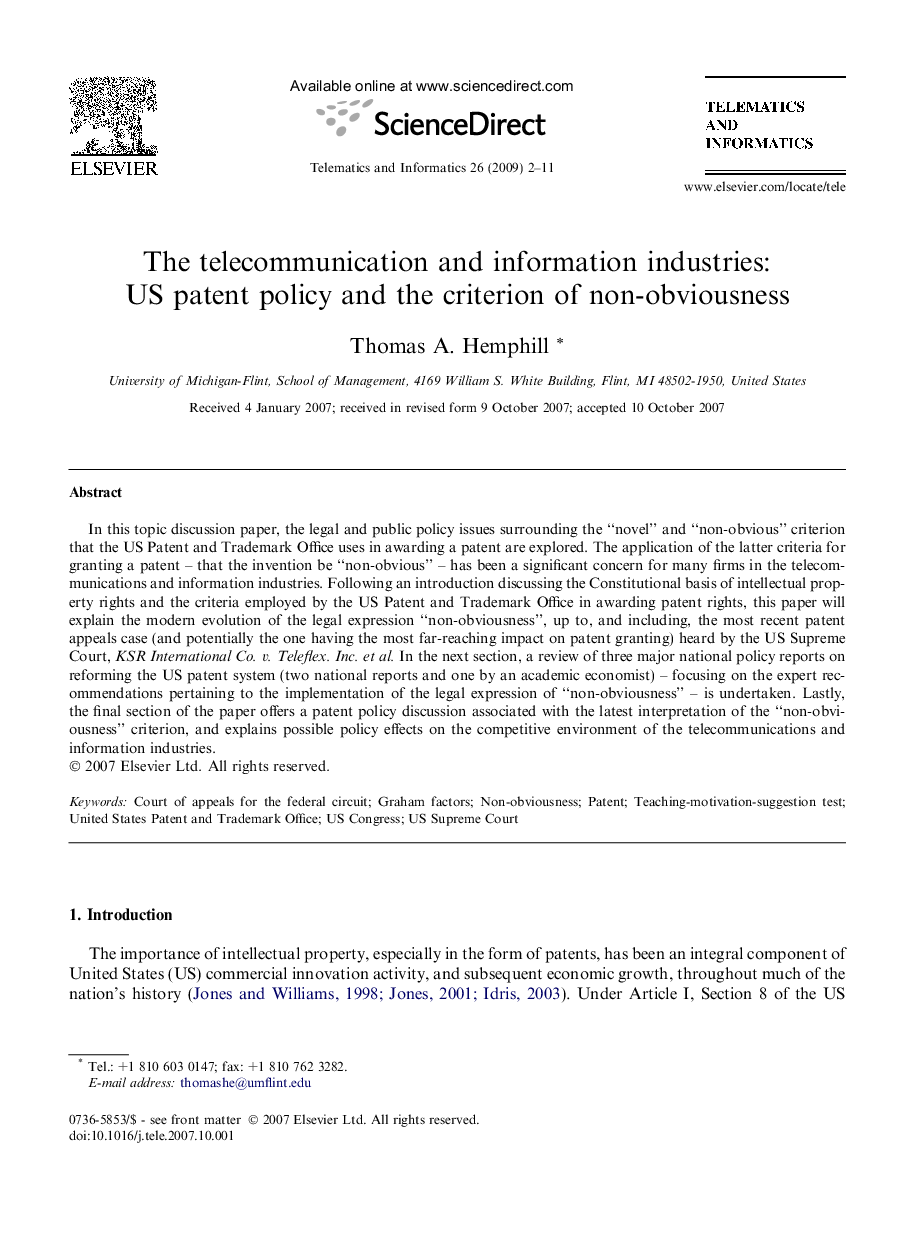| Article ID | Journal | Published Year | Pages | File Type |
|---|---|---|---|---|
| 467245 | Telematics and Informatics | 2009 | 10 Pages |
Abstract
In this topic discussion paper, the legal and public policy issues surrounding the “novel” and “non-obvious” criterion that the US Patent and Trademark Office uses in awarding a patent are explored. The application of the latter criteria for granting a patent - that the invention be “non-obvious” - has been a significant concern for many firms in the telecommunications and information industries. Following an introduction discussing the Constitutional basis of intellectual property rights and the criteria employed by the US Patent and Trademark Office in awarding patent rights, this paper will explain the modern evolution of the legal expression “non-obviousness”, up to, and including, the most recent patent appeals case (and potentially the one having the most far-reaching impact on patent granting) heard by the US Supreme Court, KSR International Co. v. Teleflex. Inc. et al. In the next section, a review of three major national policy reports on reforming the US patent system (two national reports and one by an academic economist) - focusing on the expert recommendations pertaining to the implementation of the legal expression of “non-obviousness” - is undertaken. Lastly, the final section of the paper offers a patent policy discussion associated with the latest interpretation of the “non-obviousness” criterion, and explains possible policy effects on the competitive environment of the telecommunications and information industries.
Related Topics
Physical Sciences and Engineering
Computer Science
Computer Networks and Communications
Authors
Thomas A. Hemphill,
